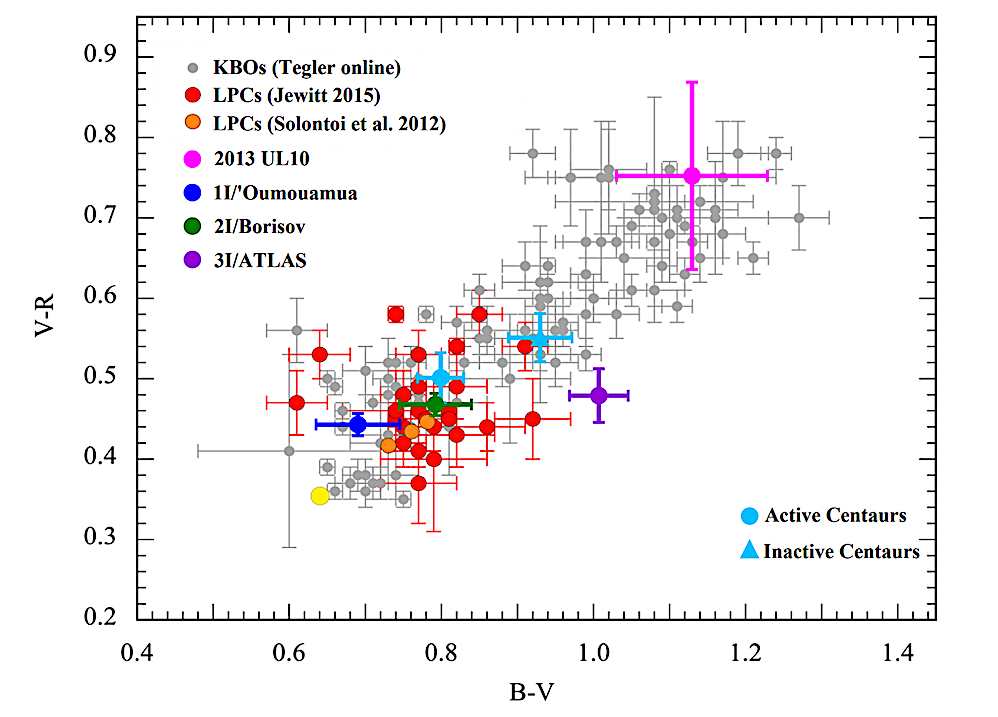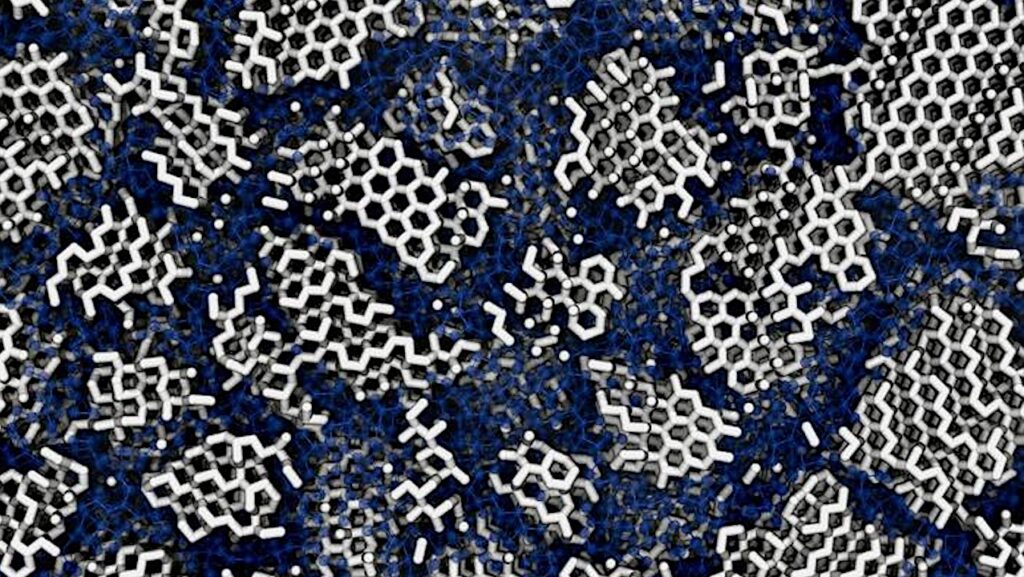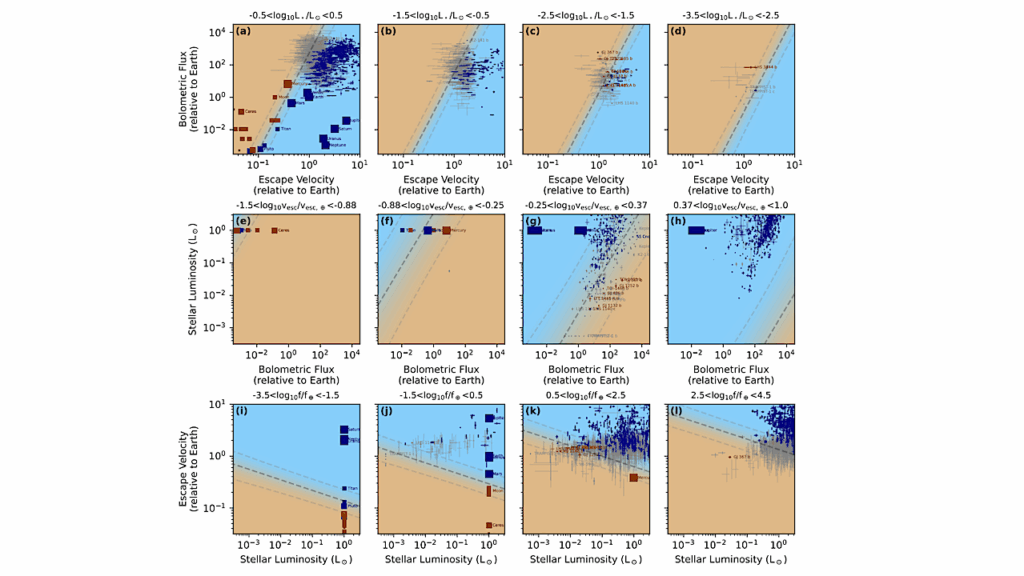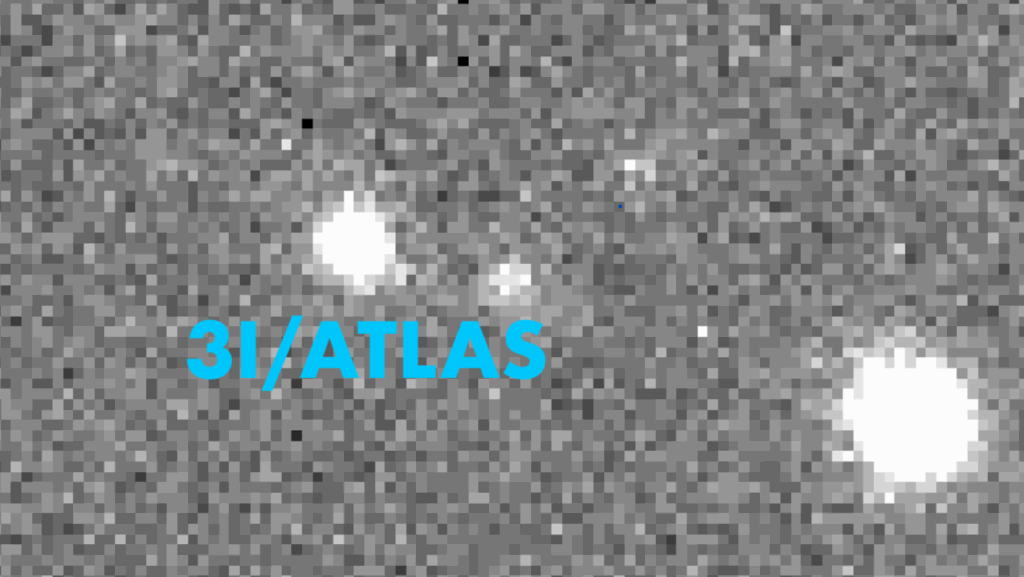Initial VLT/MUSE Spectroscopy Of The Interstellar Object 3I/ATLAS

The interstellar comet 3I/ATLAS is only the third interstellar object to be discovered. Pre-perihelion measurements provide a unique opportunity to study its activity and composition, which may alter as it is heated in the coming months.
We provide an initial baseline from optical spectroscopic observations obtained only two days after discovery, using the MUSE instrument on the VLT on 2025 July 3, while 3I was at 4.47 au from the Sun and 3.46 au from the Earth.
These observations confirm the cometary nature of 3I, and reveal a red coma with a spectral slope of (18±4)%/1000~Å, redder than most Solar System comets but similar to the surface colour of some Solar System Trans-Neptunian Objects or Centaurs.
We searched for but did not detect gas emission from C2, NH2,, CN, and [OI], which is consistent with volatile non-detections for Solar System comets at this heliocentric distance.
At present, the coma appears entirely dusty. Future observations of 3I as it comes closer to the Sun will provide an invaluable opportunity to witness the evolution of its activity, study its composition, test predictions of interstellar object population models, and compare 3I to Solar System comets.
IMAGE

Comparison of the colours of 3I measured with TRAPPIST with the other two known interstellar objects, average values for active and inactive centaurs, the very red and active 2013 UL10 centaur, and a set of Solar System comets and KBOs. The yellow dot shows the colour of the Sun. Figure adapted from Jewitt (2015), with data from Jewitt et al. (2017); Jewitt & Luu (2019); Solontoi et al. (2012); Mazzotta Epifani et al. (2018); Tegler et al. (2016). — astro-ph.EP
Cyrielle Opitom, Colin Snodgrass, Emmanuel Jehin, Michele T. Bannister, Erica Bufanda, Sophie E. Deam, Rosemary Dorsey, Marin Ferrais, Said Hmiddouch, Matthew M. Knight, Rosita Kokotanekova, Brayden Leicester, Michaël Marsset, Brian Murphy, Vincent Okoth, Ryan Ridden-Harper, Mathieu Vander Donckt, Léa Ferellec, Damien Hutsemekers, Manuela Lippi, Jean Manfroid, Zouhair Benkhaldoun
Comments: To be submitted to MNRAS
Subjects: Earth and Planetary Astrophysics (astro-ph.EP); Astrophysics of Galaxies (astro-ph.GA)
Cite as: arXiv:2507.05226 [astro-ph.EP] (or arXiv:2507.05226v1 [astro-ph.EP] for this version)
https://doi.org/10.48550/arXiv.2507.05226
Focus to learn more
Submission history
From: Cyrielle Opitom
[v1] Mon, 7 Jul 2025 17:35:30 UTC (1,191 KB)
https://arxiv.org/abs/2507.05226
Astrobiology, Astrochemistry, Astronomy, Interstellar,








